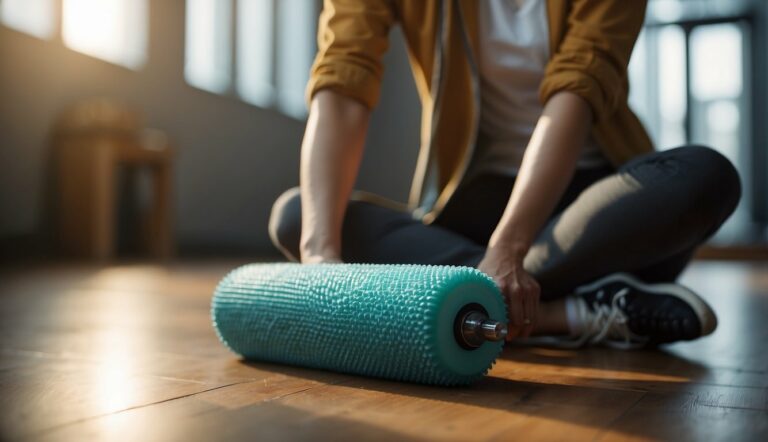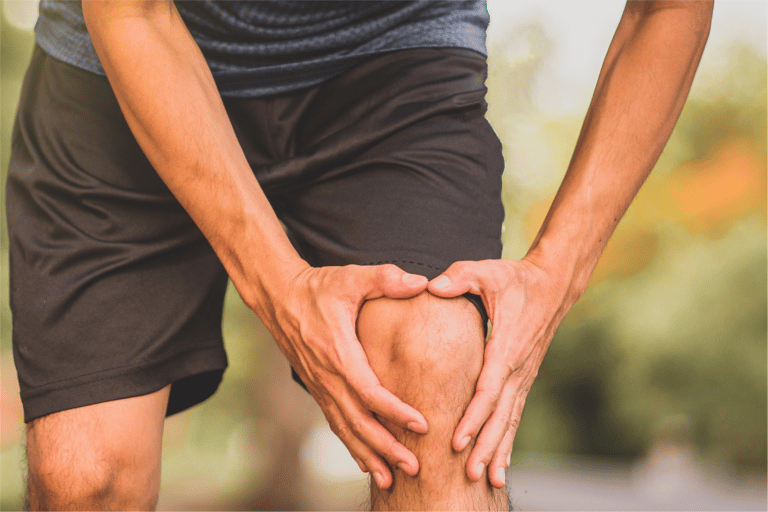Foot Strengthening Exercises for Trail Runners: Boost Your Stability and Endurance
As a UESCA certified running coach with a passion for trail running, I’ve seen firsthand how crucial foot strength is for performance. Trail running presents unique challenges due to uneven terrain and constant shifts in direction, which demand strong, stable feet. To help trail runners enhance their stability and reduce the risk of injury, I emphasize the importance of foot strengthening exercises. These exercises play a pivotal role in developing the smaller stabilizer muscles in the foot, which are essential for maintaining balance on rugged trails.
Implementing targeted exercises into a training routine can significantly boost a runner’s capabilities on the trails. Simple but effective activities like toe curls, heel raises, and marble pickups are designed to fortify the foot muscles. These foundational exercises are not only easy to perform but also require minimal equipment, making them accessible to runners at all levels. By dedicating time to strengthen the feet, trail runners can improve their overall performance, ensuring safer and more enjoyable runs through the great outdoors.
Importance of Strong Feet for Trail Runners
Strong feet are crucial for trail running, where balance and mobility are constantly tested. I’ll guide you through understanding foot mechanics and the benefits of having strong feet on the trails.
Understanding Foot Mechanics
The foot is a complex structure comprising over 20 muscles, 26 bones, 33 joints, and numerous tendons and ligaments that work in unison to support each step I take. When running, my feet act as the initial point of contact with the ground, affecting my entire body’s biomechanics. Maintaining proper foot posture is essential to distribute forces and prevent injuries.
Benefits of Strong Feet in Trail Running
Strong feet enhance performance and stability on unstable surfaces encountered in trail running. Improved strength in the feet and toes can lead to a more efficient stride, as it allows me to better maintain the integrity of my arch, which in turn limits excessive pronation. This results in reduced injury risk and enhanced balance, both of which are critical when navigating uneven terrain.
The Best Exercises for Foot Strengthening for Trail Running
Trail running presents unique challenges for the feet due to the uneven terrain and constant shifts in direction and elevation. Strengthening the muscles in your feet can improve balance, stability, and overall foot health. Here are some of the best exercises tailored for foot strengthening, which are particularly beneficial for trail runners.
Short Foot Exercise
How to do it:
- Sit in a chair with your feet flat on the ground.
- Without curling your toes, try to shorten your foot by pulling the ball of your foot towards your heel. The arch of your foot should lift as you do this.
- Hold the contraction for a few seconds, then release.
- Repeat for 10-15 repetitions on each foot.
Why it’s important:
The Short Foot Exercise targets the intrinsic muscles of the foot, which support the arch and overall foot stability. Stronger arches can help prevent overpronation and reduce the risk of plantar fasciitis, especially important when navigating the uneven surfaces of trail running.
Big Toe Press
How to do it:
- Stand with your feet hip-width apart.
- Lift all your toes off the ground, then press just your big toes down while keeping the others lifted.
- Hold this position for a few seconds, then release.
- Perform 10-15 repetitions on each foot.
Why it’s important:
The Big Toe Press strengthens the muscles around the big toe and can improve toe-off power during running. A strong big toe helps maintain balance and propulsion on trails, which can enhance running efficiency and help prevent toe injuries.
Toe Splay
How to do it:
- Sit or stand with your feet flat on the ground.
- Spread your toes as far apart as possible without straining.
- Hold the splay for a couple of seconds, then relax.
- Aim for 10-15 repetitions with each foot.
Why it’s important:
Toe Splay exercises increase the control and strength of the abductor and adductor muscles of the feet. Improved toe splay can lead to better weight distribution and a more stable base, which is crucial for trail runners who encounter varied terrain (Trail Runner Magazine).
Leg Swings
How to do it:
- Stand on one foot while holding onto a stable object for balance.
- Swing the other leg forward and back, like a pendulum, keeping your posture upright.
- Perform 20-30 swings on each leg.
Why it’s important:
Leg Swings are not only a dynamic warm-up but also challenge the stabilizing muscles of the standing foot. They can improve neuromuscular coordination and prepare the feet for the dynamic actions involved in trail running.
Calf Raise to Big Toe Press
How to do it:
- Stand with your feet hip-width apart.
- Lift your heels off the ground, coming onto your toes.
- At the top of the calf raise, press down through the big toe to further activate the muscles of the foot.
- Lower back down and repeat for 10-15 repetitions.
Why it’s important:
This exercise combines a calf raise with a focus on the big toe, which strengthens the calf muscles along with the arch and toe flexors. Strong calves and resilient toe flexors support ankle stability and can help absorb the impact of running on uneven trails.
Incorporating these exercises into your training routine can help build a solid foundation for your feet, leading to improved performance and reduced injury risk in trail running. Remember to start slowly and increase the intensity and volume of these exercises gradually to avoid overloading the muscles.
Foot Injury Prevention and Recovery for Trail Runners
Incorporating foot strengthening exercises is crucial for trail runners to prevent injuries like plantar fasciitis and shin splints, as well as to encourage recovery from common running-related issues.
Addressing Common Foot Injuries
My experience as a running coach has taught me that trail runners often face specific foot injuries such as plantar fasciitis, shin splints, achilles tendinitis, bunions, neuromas, and ankle sprains. To prevent these, paying attention to the signs your body sends is essential. Here’s a targeted approach:
- Plantar Fasciitis: This results from strain on the ligament connecting your heel to your toes. Symptoms include pain in the heel or bottom of the foot, especially in the morning.
- Shin Splints: You feel pain along the inside of your shinbone, often due to overuse.
- Achilles Tendinitis: This is characterized by pain along the back of the leg near the heel.
- Bunions, Neuromas, Ankle Sprains: These can be caused by improper footwear, a lack of flexibility, or insufficient strength in the feet and ankles. Toe spacers can be used to help correct bunions and neuromas.
Injury-Specific Strengthening Routines
For each injury risk, I recommend specific strengthening routines:
Plantar Fasciitis
- Calf raises to strengthen the muscles around your heel and improve ankle stability.
- Towel curls to enhance your arch strength, grabbing a towel under your toes and pulling it toward you.
Shin Splints
- Toe taps to improve shin muscle strength, simply tap your toes while keeping your heel on the ground.
- Heel drops which involve standing on a step with your heels hanging off and gently lowering them down.
Achilles Tendinitis
- Eccentric heel drops which target the Achilles tendon by standing on a step and slowly lowering your heels below the step level.
- Ankle dorsiflexion with a band for strengthening the muscles that support the tendon.
Bunions, Neuromas, Ankle Sprains
- Spread and squeeze a bunch of toe spacers to increase toe strength and mobility.
- Balance exercises on one leg to improve ankle stability and reduce the risk of sprains.
By focusing on these exercises, you can help prevent injuries related to trail running and promote recovery from existing conditions, keeping your running regimen consistent and pain-free.
Advanced Techniques for Enhanced Performance
To significantly boost trail running performance, advanced techniques that focus on balance, agility, and targeted lower leg and core strength are crucial. By integrating these workouts, runners can enhance power and speed while reinforcing hip stability and core strength.
Incorporating Balance and Agility Workouts
I recommend including balance and agility drills which are paramount for fine-tuning your running muscles and increasing foot speed.
Balance exercises, such as single-leg stands and Bosu ball workouts, improve stability and engage the core, translating to better performance on uneven trails. Agility drills, like ladder runs and cone drills, quicken foot turnover, enhancing your ability to swiftly navigate technical sections of a trail.
Balance Workouts:
- Single-leg stands (aim for 30 seconds on each leg)
- Bosu ball squats (3 sets of 10 repetitions)
Agility Drills:
- Ladder runs (repeat for 5 minutes, rest, then repeat)
- Cone weaves (5 rounds of 20 yards)
Strength Training for Lower Legs and Core
A focused strength regimen targets the lower legs, glutes, and core, increasing your running power and ability to jump and land safely. Exercises like calf raises, weighted squats, and lunges specifically build lower leg strength. For core power, incorporating planks, Russian twists, and leg raises will fortify the muscle groups essential for maintaining endurance and a strong running posture.
Lower Leg and Glute Strength:
- Calf raises (4 sets of 12 repetitions)
- Weighted squats (4 sets of 8 repetitions)
- Walking lunges (3 sets of 10 repetitions on each leg)
Core Exercises:
- Planks (hold for 60 seconds, repeat 3 times)
- Russian twists (3 sets of 15 repetitions on each side)
- Leg raises (3 sets of 10 repetitions)
By methodically working both the agility and strength aspects into your routine, you’ll see a marked improvement in your trail running ability, especially in tackling challenging terrains that demand extra footwork finesse and core involvement.
Running Form and Footwear Considerations

As a UESCA certified running coach, I understand the critical role that running form and appropriate footwear play in trail running success and injury prevention. These are the building blocks for every runner’s journey, whether training for a marathon or simply enjoying a trail run.
Optimizing Running Biomechanics
Proper running form allows for efficient movement and lessens the chance of injury. Keep your gaze ahead, scanning the trail about 10 to 15 feet in front to anticipate obstacles. Encourage a shorter stride to maintain agility and quick reaction capacity, especially on uneven terrain. Pay attention to your foot strike:
- Neutral runners: your feet tend to roll inward slightly upon landing.
- Pronators: your feet roll inward more than ideal.
- Supinators: your feet roll outward too much.
Each type of foot roll requires different strategies for foot strengthening to prevent foot pain and injury.
Choosing the Right Shoes for Trail Running
The choice of shoes is paramount for trail runners, influencing both performance and protection.
- Stability: For over-pronators, shoes with good arch support and corrective features.
- Cushioning: For under-pronators (supinators), well-cushioned shoes to absorb impact.
- Outsole: Durable with aggressive treads for grip on diverse terrain.
A table for a quick glance on what you might need:
| Foot Type | Shoe Feature | Benefit |
|---|---|---|
| Neutral | Balanced cushioning | Support natural gait |
| Over-pronator | Stability features | Prevent excessive inward roll |
| Under-pronator | Extra cushioning | Aid shock absorption |
Remember, regular foot-strengthening exercises complement the right shoes in reducing the risk of foot pain and injury for trail runners like us.






